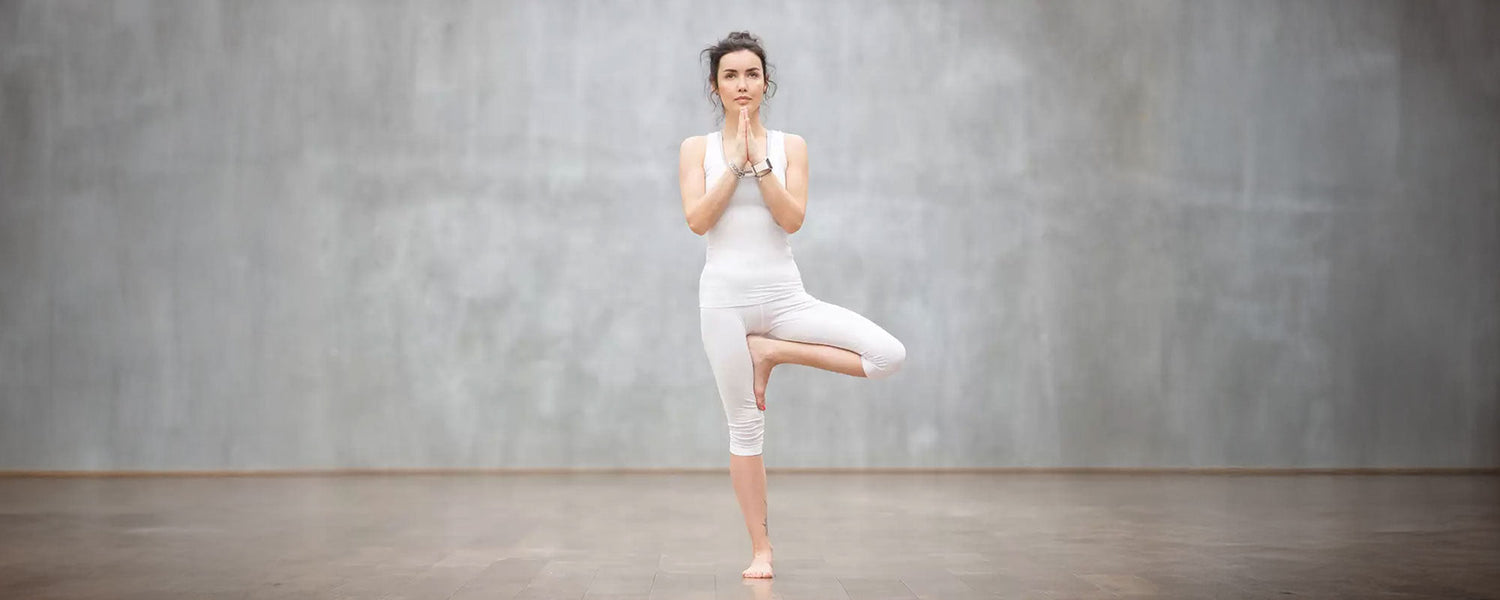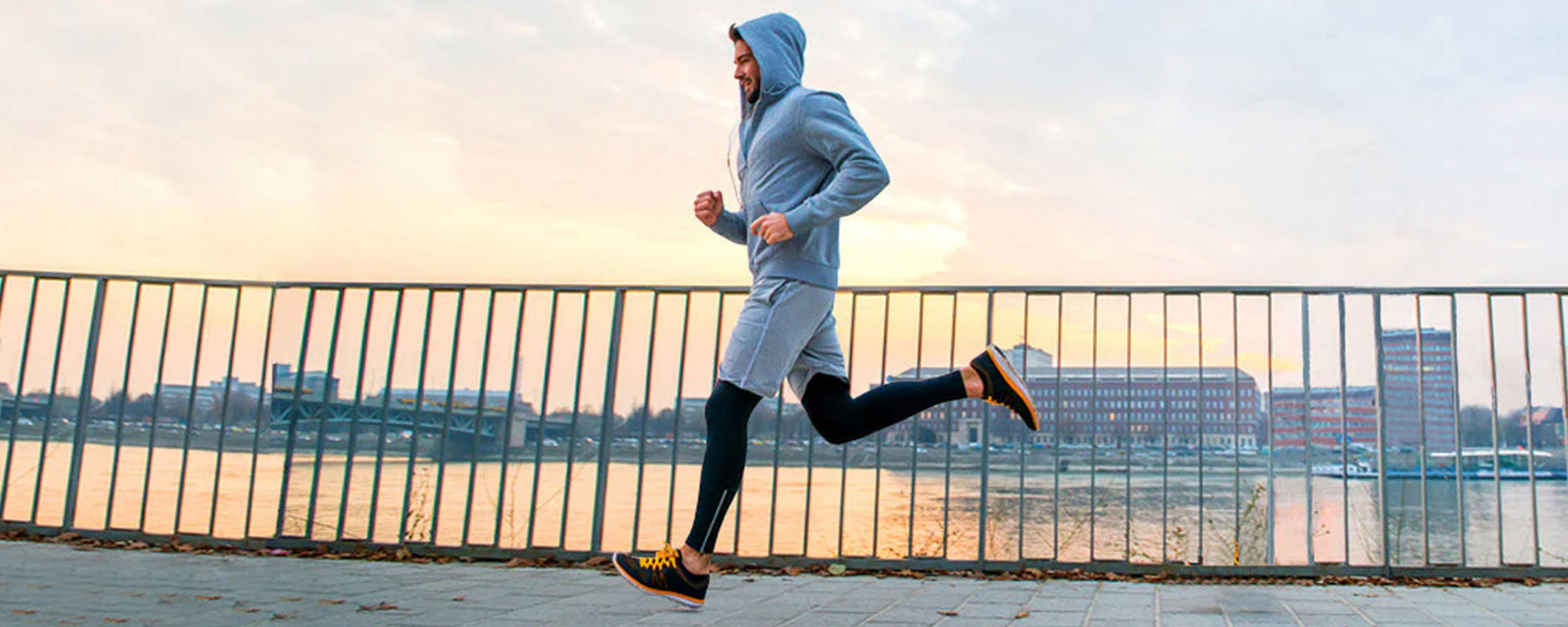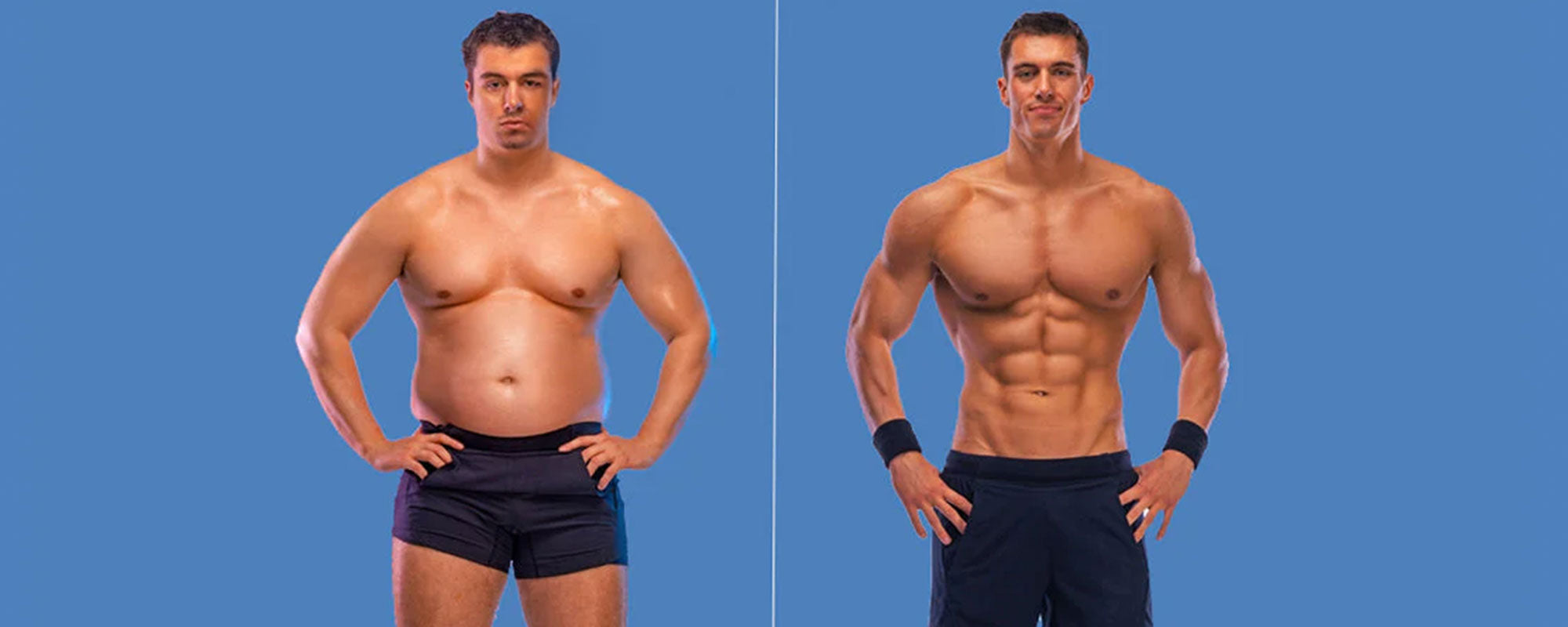Table of content
1. Introduction
The sedentary lifestyle these days has damaged our body posture. People spend hours working at their desktops and laptops without taking into account their sitting positions. Consequently, these prolonged bad postures lead to many health issues, e.g. nerve pain, back pain and even vertebral displacement in the worst cases.
However, all of these problems can be dealt with by including yoga in your daily routine. There are many yoga poses which strengthen muscles in the entire body and help prevent the negative effects of sitting all day.
This article will explain how yoga helps maintain good body posture, why body postures are important, and what are the best yoga poses you can perform to get a better body posture.
2. What is Yoga?
Yoga is a form of exercise that first originated in India with the aim to bring harmony between the mind, body, and environment.
Yoga involves moving your body into various positions to increase fitness and flexibility, relax your mind, and improve your breathing.
When the body becomes strong and flexible, posture improves automatically. That is why yoga has become a fantastic method to improve body posture.
3. How Does Yoga Help With Posture?
- Various poses in yoga focus on strengthening different muscle groups. A strong core is the key to standing tall as it supports the entire body. The majority of sitting and standing positions in yoga help build up core strength that in turn can improve body posture.
- Yoga also enhances mindfulness, helping your body to respond quickly when adjusting your posture in case of slumping or slouching.
- Yoga poses require stretching muscles that increase muscle’s flexibility. It ultimately reduces stiffness and helps you to move better.
“According to a study, people have noticed about 35% improvement in their flexibility after doing only 8 weeks of yoga.”
4. Why Choose Yoga?
- It is easy to perform and does not require any equipment. All you need is a yoga mat along with proper compression clothes to take a start.
- It is simple yet effective, hence, the best form of workout to gain better body posture over time.
5. Why Do We Need Good Body Posture?
Body posture is a position in which your body is being naturally exerted upon by gravity. It can severely impact both your physical and mental health.
-
Bad body postureis the root cause of many health problems including:
- Back Pain
- Poor Circulation
- Poor Digestion
- Fatigue
- Impaired Cardiovascular System
- Bad Mood etc.
Moreover, it can also alter the original curved shape of your spine over time that can cause moderate to severe back pain.
- Good posture is essential to ward off all these negative health problems. It positions your body in a way that puts a minimum amount of stress on the ligaments and muscles. It maintains the natural spinal curves, the joints & muscles stay in the correct alignment. Therefore, good body posture is mandatory to keep your body fit and healthy.
6. Categories of Yoga Poses
There are five categories of yoga poses based on the type of body muscles exerted. A good mix of these yoga poses can help you sustain a better body posture for life time.
6.1. Standing Poses
Also known as standing ASANAS, Standing poses are considered the building blocks of yoga practice. They help improve your body posture by correcting the body’s vertical alignment.
-
Benefits:
- Helps with balance
- Strengthens ankles, legs, and feet
- Stretches the shoulders
- e.g. Mountain Pose, Downward facing Dog, etc.
6.2. Seated Poses
Seated poses are good for exercising various parts of the body at once. Although they seem basic, they can efficiently strengthen the muscles in your core, back, abdomen, legs, and arms.
-
Benefits:
- Easy core muscles workout
- Balance body weight
- Strengthen the back
- Improve body posture
- Improve range of motion
e.g. Cow Face Pose, Lotus Pose, etc.
6.3. Inverted Poses
These are probably the most difficult yoga poses as they require you to completely invert your body while maintaining balance. They improve your body posture by helping you to maintain balance when extending your arms.
For inverted poses, the heart is kept at a higher position than the head from the ground. In other words, your body is inverted from its original upright position by placing your head below your heart and hips. Inverted pose helps reduce the pressure between the spinal discs.
-
Benefits:
- Improve balance
- Strengthen muscles
- Enhance circulation
- Increase energy levels
e.g. Head Stand, Downward Dog, etc.
6.4. Arm Balances
These poses mainly focus on the arms and core. They are a bit challenging but very effective in maintaining arm balance and overall body posture.
-
Benefits:
- Enhanced flexibility
- Increased shoulders and core strength
- Improved mental focus
- Better body posture
e.g. Plan Pose, Side Plank etc.
6.5. Restorative
Also called meditative poses, these help to relax your body and mind. They are simple and effective as the body is not moving that much. Instead, you keep still and focus on putting your mind at ease.
-
Benefits:
- Alleviate chronic pain
- Relax body and mind
- Improve sleep and mood
- Reduce muscle tension
- Help maintain better posture
e.g. Bridge Pose.
7. 8 Yoga Poses for Better Posture

7.1. Plank Pose

The main target of plank pose is the core muscles. A strong core is crucial for developing good body posture.
Plank pose builds up core strength while revealing your weak areas. Hence, it has an important role in improving overall body posture.
-
How to Perform?
- Start in a push-up position with your fingers spread wide and pressed against the ground.
- Keep your leg muscles active and feet at hip-width apart.
- Slowly lift your knees to the point where your legs become straight.
- Make sure to keep your hips in line with your back and shoulders.
- Avoid sinking your tailbone to the ground and keep your core active.
-
Time Duration
- Stay in this position for 30 seconds at least.
- Once you get used to the technique, gradually increase the time.
7.2. Cobra Pose

The cobra pose is famous for stretching the shoulders, chest, and upper back which helps treat the rounded shoulder position.
It is named after the venomous snake and is ideal for making the arms and back stronger.
-
How to Perform?
- Lie on your belly and place your hands under your shoulders.
- Keep the top of your feet on the floor and stretch your legs straight back.
- Gradually lift your chest, neck, and head off the floor by pressing your hands against it.
- Make sure to keep your shoulder blades firm against your back.
- Push the ribs forward. Draw your back and shoulders towards the back of room
- Without straining your neck, tuck your chin slightly.
-
Time Duration:
- Stay in this pose for 30 seconds or five breaths.
- Relax for a few seconds, then repeat for 2-3 rounds.
7.3. Cow Face Pose

Cow Face is a fantastic pose for people who spend their entire day working at desktops. It can be performed anywhere without much difficulty. Hence, it is an ideal pose for correcting body posture either at home or in the office.
Although the name seems childish, this pose is extremely effective in preventing a stiff neck and slouchy shoulders. It mainly targets the shoulders and chest.
In the office, you can perform it on a chair. While at home, sitting on the floor is preferable.
-
How to Perform?
- If you are sitting on a chair, keep your feet on the ground .
- If you are sitting on the floor at home, find a comfortable sitting position.
A recommended pose is to stretch your legs by bending at the knee until your left foot is next to the right side of your hip and vice versa. Try to keep your feet close to your hips.
- Lift your right arm upwards then bend it down so your right fingers are touching your
- Wrap your left arm down and up your back. Bring it towards your shoulder blades so your left fingers meet your right fingers.
- If your fingers are unable to touch each other, use a towel or a strap to bridge the gap.
- Lift your chest and the crown of your head towards the sky by extending your elbows.
Time Duration:
- Hold this position for almost five breaths or 25-30 seconds. Then switch sides.
7.4. Mountain Pose

Mountain pose is a simple yet effective yoga pose for maintaining a good body posture. Although it seems easy, it is a complex pose that involves proper alignment of the entire body from head to toe.
Since it utilizes the entire body, it is often considered the epitome of good posture.
It helps to create a balance between your body and mind. It is also useful for improving balance and orientation.
Moreover, it can also reduce back pain if practiced on a daily basis.
-
How to Perform?
- Start with placing your feet apart at hip width on the floor with your arms at your sides.
- Make sure to place your feet on the floor or yoga mat.
- Then slightly bend your knees.
- Bring your hips in a neutral position by tucking your tailbone under.
- Move your shoulder blades down on your
- Elongate your neck and make sure to keep your hips, shoulders, and ears aligned . Finally, point the crown of your head towards the sky.
-
Time Duration:
- Try to maintain this pose for 30 seconds at least.
- Gradually increase your duration to about 60 seconds.
7.5. Camel Pose

Camel pose is effective in counteracting slouching. It is great for opening your heart, shoulders, and throat.
Camel pose involves a deep bend that can get rid of all the hunching due to sitting at desktops all day.
-
How to Perform?
- Start by kneeling on the ground. Keep your knees at hip-width apart.
- Place your hands on the back of your hips and keep your toes tucked under.
- Press your pelvis forward.
- Push your shoulder blades against your back and lift your chest .
- Then try to lean back slowly against your tailbone and shoulder blades.
- Continue to lean until both hands can touch your feet. Make sure to keep your thighs at right angles relative to the floor.
-
Time Duration:
- Hold a camel pose for at least 30 seconds or 3 breaths for a better
7.6. Downward Facing Dog

Downward facing dog is one of the most basic powerhouse yoga poses. This pose opens the back, chest, hamstrings, and shoulders and strengthens the core, shoulders, and arms.
Moreover, it also improves blood circulation and strengthens the bones. Hence, It’s widely used in many yoga sequences due to its multiple benefits.
-
How to Perform?
- Start with a plank pose.
- Press your hands against the yoga mat.
- Slowly lift your hips up and back while straightening your legs.
- Make sure your heels are hip-width apart and fingers are spread wide.
- Keep your head between your forearms.
- Relax your neck and head.
- Keep your gaze on your toes.
-
Time Duration:
- In the beginning, try to hold this pose for five breaths.
- Gradually increase the time to one minute.
7.7. Tree Pose

Tree Pose is a standing yoga pose that helps to improve body posture and stability, mainly by focusing on balance. Standing in a proper posture requires perfect body alignment which this pose helps practice.
It opens the hips by stretching muscles at your groin and inner thighs. Apart from that, it also strengthens the core and legs to help with balance (the biggest benefit of tree pose).
Moreover, it is also useful for preventing muscle tightness due to poor posture.
-
How to Perform?
- Start with a mountain pose. Put all your weight on your left foot and keep it planted on the ground.
- Try to keep your spine elongated and your shoulders aligned with your hips. Then bend your right knee and grab your right
- Press your right foot against the inside of your left Make sure it is not directly at the knee joint.
- Raise your hands above your head or keep them on your chest. Make sure to stand straight .
- Focus on either the floor or the wall to improve your balance.
-
Time Duration:
- Try to hold this pose for at least 20 to 30 seconds or three to eight
- Once you get used to the pose, slowly increase the time to one
7.8. Bridge Pose

Last but not least, bridge pose is another yoga pose that focuses on the lower body. It is a type of backbender that is equally helpful for all levels.
In addition to opening the spine and neck, it also helps calm your mind and relieves stress from your body.
It is also useful in opening constricted muscles in the chest and shoulders.
-
How to Perform?
- Lie down on your back with your palms flat on the floor at your sides. Bend your knees while keeping the soles of your feet on the floor.
- Try to keep your feet as close as possible to your fingers while at hip-width apart.
- Inhale and lift your hips by pressing your feet and hands against the floor. Hold this position for three Exhale and release by lowering one vertebrae at a time.
- Similarly, start the second round by lifting your hips while inhaling.
- Clasp your hands together and extend your shoulders for a deeper backbend. Hold this pose again for three breaths once your thighs and butt are parallel. Then exhale and release one vertebrae at a time.
- You can also take a third round by combining aspects of the first two.
Time Duration:
- For better posture, make sure to stay in bridge pose for at least 20-30 seconds.
8. Takeaway
No doubt the modern lifestyle is seriously destroying our bodies and health. But practicing yoga can significantly improve the situation. You can easily practice any of the above yoga poses at home depending on your preferred comfort level. It is much more convenient yet just as effective as other types of workout.
Try to incorporate at least 2 – 3 poses daily or thrice a week to sustain a better body posture. They will definitely make you stand straighter and stronger for years to come.













Leave a comment
This site is protected by hCaptcha and the hCaptcha Privacy Policy and Terms of Service apply.